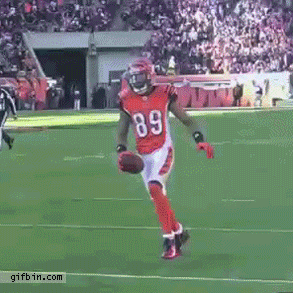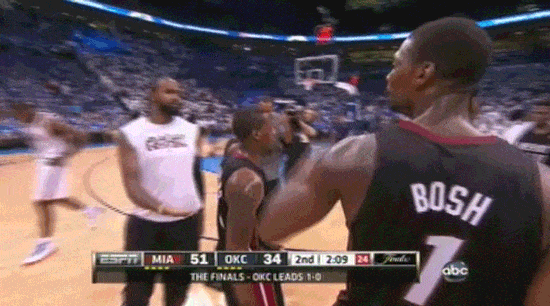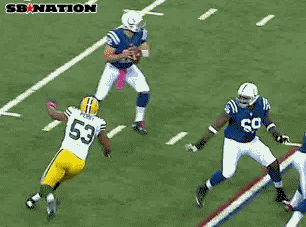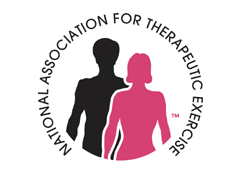What keeps Tom Brady winning Superbowls? Extraordinary proprioception. Proprioception is also the sense that allowed Jerome Simpson to do this…

Athletic ability like this is so amazing to watch, isn’t it? Jerome knew exactly where his body was in time and space to perfectly execute that forward flip over a cardinal player to land on his feet in the end zone. It’s another example of exceptional human proprioception.
What is Proprioception?
Proprioception is a combination of the Latin word “proprius” meaning “one’s own” and “perception”. It is your Central Nervous System’s (CNS) perception of self or more accurately, the brain’s ability to know where your body is and what it is doing. It’s the sense of where your limbs are in relation to your body.

Your senses such as sight, smell, touch, taste, and hearing are essentially external senses. These five senses collect information from outside the body from the outside world and communicates this information to your brain. Proprioceptors are sensory receptors within your body that collect information from the body itself.
For example, if I asked you to close your eyes, stand on one leg and then lift your both arms out in front of you with your elbow bent to 90°, then you would know that your arms were is in this position because of proprioception. If you had trouble doing this with your arms while standing on one leg, then you might have a problem with proprioception. If you had no problem doing this, then you were able to do so because of proprioception.
Proprioceptors are the sensory organs in our bodies that give us the ability to sense balance and position. These sensory receptors reside inside our muscles (muscle spindles), tendons (Golgi tendon organs) and joint capsules. Proprioception allows you to pick up a remembered object without looking at it, to walk without looking at your feet, and to move in the dark without falling over.

Proprioception and Injury Prevention
Our sense of proprioception impacts a lot of things in our bodies; balance, coordination, and application of complex movements. It provides us with an innate sense of coordination that helps us control movements AND protects our muscles and joints from strains and sprains. Without proprioception, we wouldn’t be able to run safely on uneven surfaces, throwing a ball would be more difficult and we certainly would have trouble touching our nose with our eyes closed without it!
Proprioception also plays a significant role in injury prevention in professional sports too. The better the proprioceptors are communicating to the CNS in an athlete, the higher the likely hood that their body will be able to protect itself from what it sees coming and DOESN’T see coming. The faster your proprioceptors are responding to sensory signal in your body, the faster they can respond to protect you.

Exceptional proprioception is what allows professional athletes to do their jobs better with fewer injuries, as well as the same 6thsense that keeps someone like Tom Brady winning Superbowls and playing professional football season after season.
How does proprioception prevent injuries?
First, muscle spindles and Golgi tendon organs (GTOs) detect changes in length and tension of our muscles, which helps protect us from muscle, ligament and joint injuries. For example, if you are jogging along an uneven surface, and you roll your ankle, the GTOs and muscle spindles pick up a change in the tension and force being applied to your muscles and tendons, and they are most likely able to send a quick signal to your Central Nervous System (CNS/spinal cord and brain). This signal sent by these sensory receptors, allows your CNS to then send a message to your muscles in your so that the muscles can react before damage can occur. Without this swift proprioception reflex, you would be on the ground before you knew it, and would probably have an injured ankle as a result of your fall.
Secondly, muscle spindles play a significant role in the “tightness” of muscles. You know that feeling you get when you stretch your hamstrings? The tightness you feel your hamstring muscles is the result of an involuntary muscle contraction caused by the muscle spindles. The reason behind this muscle contraction is to protect your muscles and joints from injury by keeping them in a ‘safe’ range of motion. Your Central Nervous System (CNS) has a default setting for its idea of the “ideal maximum length” of each muscle, and the muscle spindles prevent the muscles from going past this length by causing the muscle to contract. Without this proprioception sense, even the simple act of running would cause severe injuries much more frequently.
Far Reaching Consequences of Impaired Proprioception
Impaired proprioception can impact other every aspects of your life. The reason proprioception is so important is that it is not limited to just high profile athletes and their flips on the football field. In order to speak, your brain needs to use proprioception to keep track of where your jaw and tongue are and what shape your throat is when you speak. In order to drive, you need to be able to move the steering wheel, the pedals and all the other controls without looking at them. Typing on your keyboard or playing any musical instrument requires you to move without looking at your hands.
Even holding an object – a pen, a cup, a spoon, someone’s hand, or buttoning up a shirt – uses proprioception as well as uses your sense of touch. Walking too requires accurately moving hips, legs and feet and without proprioception these tasks become difficult without monitoring those limbs with your eyes, sending a continuous stream of corrections on the basis of what you can see, rather than the much faster and more accurate basis of what you “know”.
How is your proprioception? Not sure? If in doubt, get it checked out by a professional. You might just be surprised by your results!

Cheers and Happy New Year,
Drock
Want to learn more about improving your functional movement and sports performance? Then follow Dianne on her blog https://dtasmblog.wordpress.com
Dianne Rockefeller is a Athletic Performance Therapist, Licensed Massage Therapist, Certified Muscle Activation Specialist, MAT Certified Jumpstart Trainer, National Academy of Sports Medicine – Certified Personal Trainer, Certified Orthopedic Manual Therapist, Certified Myoskeletal Therapist, Certified Kinesio Taping Practitioner, and Certified Cupping Therapist. She treats athletes of all levels, from youth to professional, ALL sports. She brings a very unique perspective to manual therapy utilizing her experience with motion analysis and sport. Her blend of advanced integrated skills along with practical and rehabilitation experience deliver exceptional results. Dianne is a self-proclaimed scholar of “Applied Sports Performance Therapies”. Contact Dianne at drock@dtasm.com or 210-973-4848.








Excellent article. I need to be more “receptive” to my proprioception — keep up the fine work and I’ll be in soon so I can “keep on keeping on” as it were…